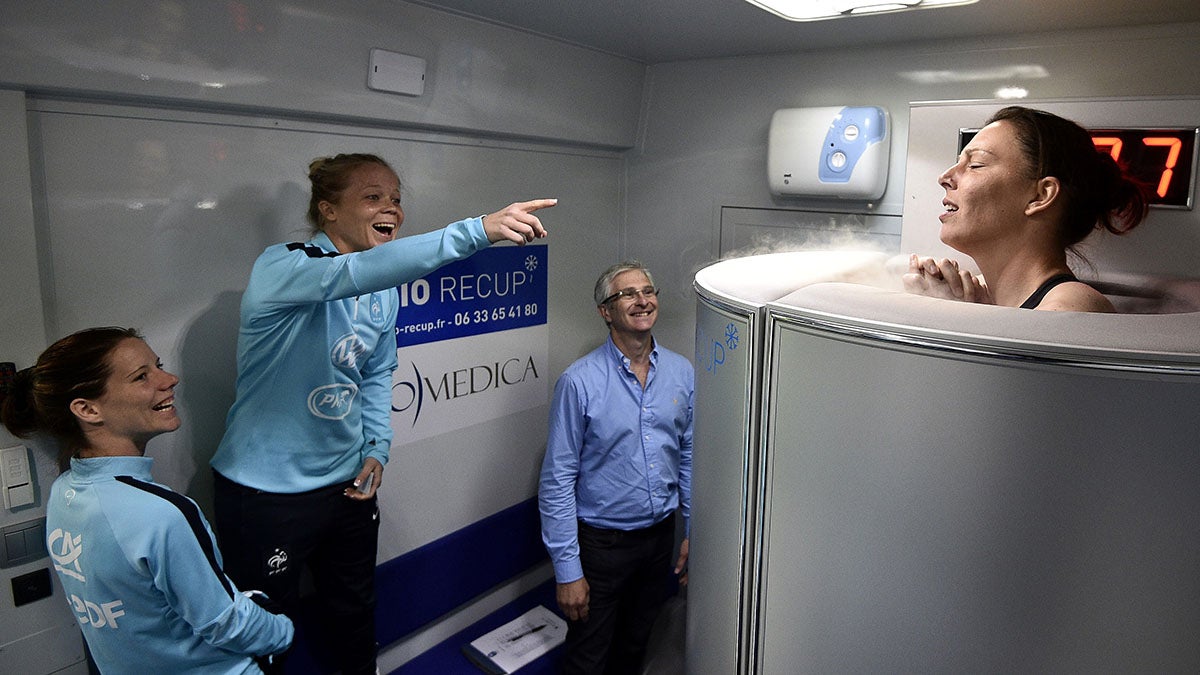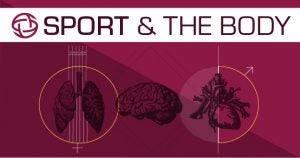Cryotherapy takes athlete recovery beyond ice bath, but is it safe?

Cryotherapy, in which an athlete’s body is immersed in a chamber that can reach a temperature of minus-300 degrees Fahrenheit, is quickly gaining popularity in sports medicine.

But exposing the body to such extreme temperatures calls into question whether the treatments are safe — or practical.
The method was developed in 1978 by a Japanese physician, Dr. Toshima Yamauchi, as a means to treat arthritis. Proponents in sports medicine believe that it reduces inflammation and promotes recovery.
“The purpose behind cryotherapy is to decrease inflammation and to help whole-body healing, basically heal at a faster rate,” said Dr. Anikar Chhabra, an orthopedic surgeon at Mayo Clinic-Phoenix who also serves as a team physician for Arizona State’s football team.
Nick Crawford, a former Division 1 football player at New Mexico State and founder of Cryo Recovery Lab in Phoenix, is a believer. He opened his business to provide an alternative treatment to injured athletes.
“In a world where opioids, painkillers and anti-inflammatories are the first things prescribed, cryotherapy literally saved my body and mind,” Crawford said.
During his playing days, Crawford used an ice bath familiar to most athletes and weekend warriors. Typically, it is a tank or whirlpool filled with ice that athletes climb into for a numbing soak.
It wasn’t until after Crawford’s football career was over that he learned about cryotherapy and what he believes are its benefits.
“(Cryotherapy) is way beyond what an ice bath can do,” Crawford said. “It’s not really fair to compare.”
Cold-water immersion therapy lasts about 10 minutes and usually not more than 20 minutes, compared to a much shorter treatment range for the cold-air cryotherapy sessions. Beyond that, the benefits of ice baths are similar, according to Dr. Erich Hohenauer, a senior researcher at the University of Applied Sciences and Arts of Southern Switzerland.
In a study of 19 men published in the Scandinavian Journal of Medicine and Science in Sports, Hohenauer compared the results for men who received cold-water immersion treatment in 50-degree water and those given cold-air cryotherapy of minus-148.
While there were differences in the oxygen levels and skin temperatures of the nine men in cold-water immersion and the 10 who were given partial-body cold-air cryotherapy, the study found no measurable physiological differences from one treatment over the other or in how the men felt after treatment.
“It’s conceivable that cryotherapy might one day replace cold-water immersion; however, more research is needed to establish the optimal cooling dose,” Hohenauer said.
Crawford noted the economic disparity between regular ice baths and cryotherapy treatments.
The cost of cryotherapy equipment ranges from about $45,000 for a full-body chamber that does use liquid nitrogen to $150,000 for one that does not.
That’s in contrast to the far lower cost of a cold tub filled with ice. Chhabra said the high price tag, coupled with potential physical risks to athletes, are reasons ASU doesn’t own cryotherapy chambers.
Aside from the cost, Crawford didn’t acknowledge any disadvantages to cryotherapy, which took a while to gain popularity in the U.S.
“It didn’t hit the states until probably 2005,” Crawford said.
Even then, it was primarily used by professional sports teams and elite athletes with access to the expensive equipment. It has become more common among amateur athletes and non-athletes in recent years.
“There’s a long list of benefits, but probably the most that we hear feedback on is it improves sleep quality,” Crawford said. “You get into a deeper sleep state, which is where all of your recovery takes place.”
Beyond the full-body version of the treatment, Crawford said that a localized version of cryotherapy is useful as well. Targeted lasers can detect temperatures in soft tissue to ensure that the cold is being evenly distributed.
“A traditional ice pack is more superficial, if you will, so it’s kind of just on the skin,” Crawford said. “(It) takes a while to penetrate the skin and get into the joint or the tissue, as to where the local (therapy) is at (minus 260 degrees Fahrenheit).”
The full-body process works by igniting the body’s natural survival mechanism. The extreme temperature essentially tricks the body into thinking that it is in a life-or-death situation, which causes it to pull the blood away from the extremities into the core.
Chhabra said that is not a good idea for some people.
“People with heart disease, people who are pregnant, you should not go in those (conditions) because there can be some increase medical risks due to those pre-existing medical conditions,” Chhabra said.
Because of the extreme temperatures used in cryotherapy, hands and feet are susceptible to injury if proper precautions are not taken. NFL wide receiver Antonio Brown is an example of a high-profile athlete who learned this lesson the hard way.
In early August, Brown suffered frostbite in his feet, which kept him out of practice for several weeks at the start of training camp.
“He didn’t wear the correct protective footwear going in,” Chhabra said. “Because of that reason, we limit the exposure for two to four minutes usually, not longer than that.”
Although the treatments are sometimes recommended by medical professionals, Chhabra said the treatments are not FDA approved, and patients who decide to accept the treatment do so at their own risk.
“There are people who live by these because it makes them feel better; it makes their body feel better,” Chhabra said. “People say they sleep better. They eat better. They feel like they lose more weight. They have more energy.”
Chhabra noted that these examples are largely anecdotal.
“It certainly does make you feel better in the short run, (but) there’s no literature proof that it helps in the long run,” Chhabra said.
As research continues, Chhabra said he does not anticipate the FDA approving the practice in the future.
“The goal for us as physicians is to educate patients, and we can’t control what they do and where they go get their treatments,” he said. “However, we can educate them, and that’s our job.”
He urges anyone considering cryotherapy to consult their doctor first.
“Most athletes, when you talk to them, will realize ‘Hey, I’m just going to get in the ice bath instead,’ ” Chhabra said. “And if the results are going to be the same, it’s a lot safer, so that’s the direction that a lot of athletes are going.”
Christopher Lindsay is a masters sports journalism major at Arizona State University
Video produced by Kiana Wollangk, a senior sports journalism major at Arizona State University


